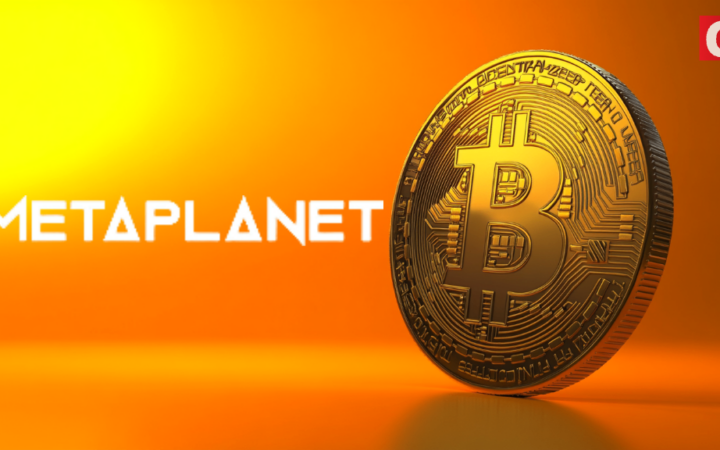
Please check out latest news, expert comments and industry insights from Coinspeaker's contributors.
By ensuring that staking provides significant benefits that can improve the gameplay and advance progress, Web3 games can easily encourage every one of their players to participate.
 Edited by Julia Sakovich
Updated
5 mins read
Edited by Julia Sakovich
Updated
5 mins read

With the rise of Proof-of-Stake blockchains such as Ethereum, the ability to stake digital tokens has become one of the most appealing aspects of crypto. By locking away crypto into a smart contract for weeks or even months at a time, investors can gain a passive income while helping to secure the blockchain and validate transactions.
Staking has become especially popular on cryptocurrency exchanges, which also use the locked-up tokens to provide liquidity to their trading platforms. Those who stake their crypto can often generate impressive yields, and it’s this activity that has made crypto so popular with a new generation of DeFi investors. Rather than sit on their tokens and hope for the price to increase, investors can stake them and earn a passive income while maintaining their positions.
Blockchain data shows that users had staked more than $20 billion worth of Ether tokens in late 2023, while other PoS chains such as Solana, BNB Chain and Cardano saw additional billions being thrown into the pot. Although staking returns vary across chains and are affected by the volatility of crypto, the ability to generate a passive income from your crypto is a big part of the industry’s appeal.
Staking has become popular as the crypto industry moves away from the energy-hungry Proof-of-Work consensus mechanism that underpins Bitcoin. The PoS system is seen as a more environmentally friendly alternative, where users who stake tokens are chosen at random to validate transactions and earn crypto rewards.
PoS doesn’t use nearly as much energy as PoW, but it does require a substantial number of users to stake their tokens into a shared staking or liquidity pool. One user is chosen at random to validate the next block of transactions, earning the rewards from that block.
The popularity of staking means that it’s not so surprising to see similar mechanisms emerge in one of the biggest Web3 sub-domains, namely blockchain games. The GameFi industry has grown up around popular play-to-earn games such as Axie Infinity, Splinterlands and The Sandbox, merging DeFi capabilities with video games and allowing gamers to earn rewards from their endeavors. P2E games use non-fungible tokens or NFT to represent unique, in-game items such as characters, skins, and weapons, as well as fungible cryptocurrencies (similar to BTC or ETH) that are paid out as rewards.
Web3 games are looking for ways to improve the user experience, and many are integrating staking functionality into their platforms to do so. Games such as MixMob, LandRocker, and Alien Worlds are incorporating staking into the fabric of their gameplay as a way to boost player’s earnings while increasing liquidity within their platforms.
One of the challenges for crypto projects is that staking mechanisms are unfamiliar to many new users, who may be wary of sending their tokens to a different wallet, where they may even be inaccessible for a significant period of time.
Web3 games have hit upon a novel way to overcome this barrier by presenting the staking process as a core element of the gameplay loop. Instead of staking being a separate activity that requires knowledge of the process and why it’s required, Web3 game developers can present it as an integral aspect of playing their games.
The best way to understand how this works is to look at some examples. MixMob is a fantasy-inspired game that takes place in a colorful, futuristic world that incorporates various modes of gameplay, including racing, player-vs-player card battles and Fornite-style open-world exploration. Players take on the role of the human resistance, fighting back against a mysterious AI that has seized control of humanity’s culture.
In MixMob, players are encouraged to race against other humans to earn rewards. The races are hosted in Turbo Arenas that anyone can access, adding a strategic twist to the game. Gameplay is fused with DeFi mechanics, so spectators can stake $SUD tokens and claim a portion of the revenues generated by each Arena. The Turbo Arenas adopt a dynamic pricing model that’s driven by demand, so as more players stake in a specific venue, the potential yield they can earn adjusts proportionately. Yield is derived from the Turbo Arena’s revenue, which includes profit, rake and exchange fees, and is then distributed among stakers based on the size of their stake.
Another example of staking in gameplay is LandRocker, which is a space exploration and mining-based metaverse game. Players are tasked with exploring new worlds and mining them for valuable resources and $LRT crypto rewards. The $LRT derived from mining is the foundation of LandRocker’s financial ecosystem. Users can stake the $LRT they unearth from mining or earn as rewards in order to generate fuel for their mining operations, advanced machinery and more. They can also stake their $LRT tokens in liquidity pools to earn additional crypto.
Unlike with other kinds of staking mechanisms, LandRocker merges the experience with gameplay, eliminating a crucial barrier to adoption. Players benefit from both the passive income and the opportunity to further their progress in the game.
As we can see from the above examples, in-game staking provides advantages to both players (enhancing the gameplay experience) and also the in-game economy itself (boosting liquidity). It’s no wonder that in-game staking is becoming such an integral part of the Web3 gaming industry. By presenting it as a necessary function of the game, developers avoid the confusion and uncertainty associated with traditional staking mechanisms.
Web3 games are uniquely positioned to integrate advanced DeFi mechanisms into their platforms without causing any confusion or headaches for users. By ensuring that staking provides significant benefits that can improve the gameplay and advance progress, Web3 games can easily encourage every one of their players to participate.
Games such as MixMob and LandRocker are trailblazers in this space, utilizing staking as a way for players to obtain the valuable in-game NFTs and crypto rewards they desperately need to continue making progress in the game.
Disclaimer: Coinspeaker is committed to providing unbiased and transparent reporting. This article aims to deliver accurate and timely information but should not be taken as financial or investment advice. Since market conditions can change rapidly, we encourage you to verify information on your own and consult with a professional before making any decisions based on this content.

Please check out latest news, expert comments and industry insights from Coinspeaker's contributors.





